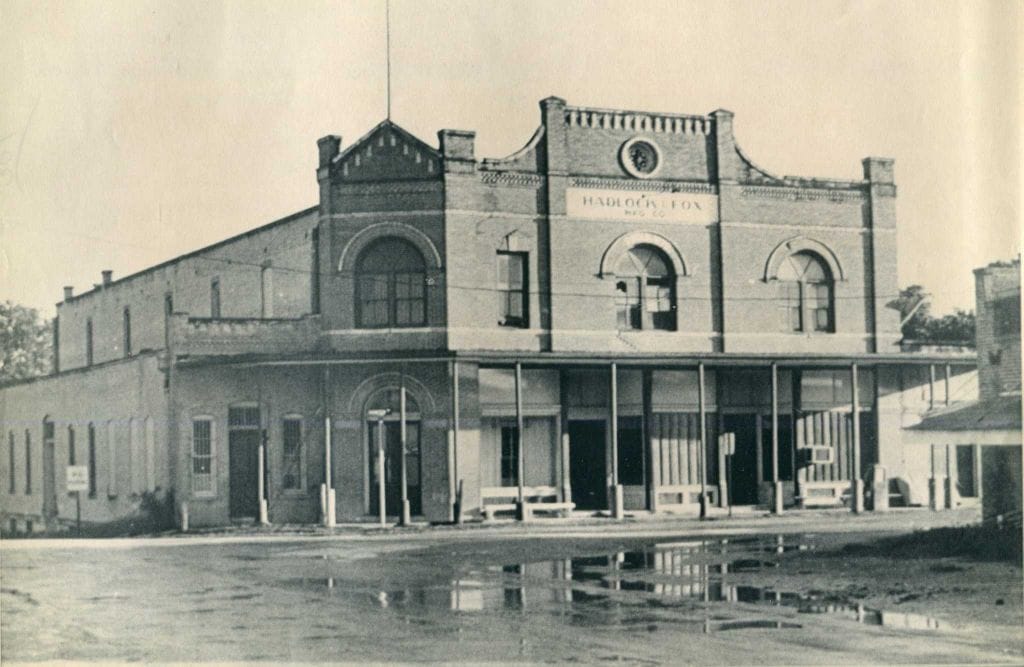Nestled in the scenic Texas Hill Country, the town of Gruene, Texas, stands as a captivating blend of history and charm. This article delves into the annals of Gruene’s past, uncovering the captivating stories that make this small town so special.
History of Gruene, Texas
The story of Gruene begins in the mid-1840s with the arrival of European immigrants, predominantly German families, seeking a new life in the heart of Texas. This wave of immigration infused the town with a unique German-Texan culture that is still palpable today. Among these settlers was Ernst Gruene, a prominent figure who played a pivotal role in shaping the town’s early development.
The late 1800s saw Gruene flourish as a cotton-producing center. Ernst’s son, Henry D. Gruene, established a thriving cotton plantation and constructed elegant Victorian-style homes that continue to grace the town’s landscape. It was during this boom period that Gruene Hall, destined to become a legendary music venue, was built in 1878.
As the cotton industry declined, Gruene underwent a transformation. Rather than fading into obscurity, the town embraced its heritage, preserving its historic buildings and celebrating its unique German-Texan character. Today, Gruene stands as a living testament to its past, attracting visitors eager to experience a bygone era.
What Makes Gruene’s History So Unique?
- German-Texan Fusion: The town’s architecture, traditions, and community events reflect a harmonious blend of German and Texan influences, setting it apart from other towns in the region.
- Gruene Hall’s Legacy: As the oldest dance hall in Texas, Gruene Hall has witnessed countless musical performances, from country legends to rising stars, solidifying its place in Texas music history.
- The Guadalupe River’s Significance: Flowing through the heart of Gruene, the Guadalupe River has always been a vital resource, providing water for agriculture, transportation, and recreational opportunities.
- Living History: Stepping into the Gruene Historic District, with its meticulously preserved Victorian buildings like the Grapevine House, is akin to traveling back in time.
- Preservation for Future Generations: Gruene’s residents take immense pride in their heritage and are dedicated to preserving its charm and history for future generations.
Why is Gruene, Texas famous?
Gruene’s fame extends far beyond its quaint charm. The town draws visitors from all walks of life, captivated by its unique blend of history, music, and scenic beauty.
A Glimpse into the Past: The German Connection
Arriving in the mid-1840s, German immigrants left an indelible mark on Gruene’s cultural landscape. This influence is evident in the town’s architecture, traditions, and the descendants of those original settlers who continue to reside there, preserving their heritage.
More Than Just a Dance Hall: The Gruene Hall Legacy
Established in 1878, Gruene Hall holds the distinction of being the oldest dance hall in Texas. Over the decades, its stage has been graced by some of the biggest names in country music, including Willie Nelson, George Strait, and Bob Dylan, further amplifying its legendary status. Gruene Hall is more than just a music venue; it is a shrine to Texas music history, attracting music lovers eager to experience its unique ambiance.
Nature Meets History: A Scenic Escape
The Guadalupe River, meandering through Gruene, adds to the town’s allure. The riverfront park offers a serene escape, inviting visitors to stroll along scenic trails, cast a fishing line into the rippling water, or enjoy a leisurely kayak ride. This blend of history and nature provides a refreshing retreat for all.
A Delicate Balance: Honoring the Past, Welcoming the Future
Gruene has managed to preserve its historical character while embracing modernity. The Gruene Historic District stands as a testament to this commitment, with its meticulously maintained Victorian buildings. Yet, Gruene is far from a stagnant relic of the past. Local businesses thrive, offering unique crafts, delicious food, and a welcoming atmosphere for visitors. This harmonious coexistence of history and modernity defines Gruene’s unique charm.
What movie was filmed at Gruene Hall?
Cinephiles might recognize Gruene Hall from the iconic dance scene in the 1996 film “Michael,” featuring John Travolta. The dance hall’s distinctive ambiance has also attracted other filmmakers, with appearances in movies such as the 2006 drama “Coyote Funeral.”
The hall’s historical charm has also served as a backdrop for music videos by artists such as Wade Hayes, Scott McCreery, and George Strait. Its legendary acoustics have drawn renowned musicians like LeAnn Rimes and ZZ Top to record live albums within its hallowed walls.
Gruene Hall’s allure extends beyond its visual appeal; its historical significance and unique atmosphere have solidified its place as a coveted location for filmmakers and musicians alike.
Where Did the Word Gruene Come From?
The name “Gruene,” pronounced “groy-ne,” reflects the town’s deep German roots. It is believed to have originated from the German word “grün,” meaning “green.”
In 18th-century Germany, the surname “Gruene” was common among rural families, often associated with farming, nature, or even good luck and abundance. Families bearing this name were likely connected to the land, with “grün” signifying fertile fields and bountiful harvests.
During the 19th and early 20th centuries, German and Austrian families, many carrying the Gruene surname, immigrated to America. A significant number of these families settled in Guadalupe County, Texas, where the town of Gruene would later be established.
In 1872, Ernst Gruene, likely a descendant of those original “grünes,” founded the town that bears his family name, forever linking this small corner of Texas to a German word signifying growth, prosperity, and a connection to nature.
How Old is Gruene, Texas?
While the exact founding date of Gruene, Texas, remains unclear, it is widely accepted that German immigrant Ernst Gruene established the town in 1845 when he built the first house there. The town’s history is intricately linked with the Gruene family, whose legacy is evident in its well-preserved architecture and captivating stories.
During the mid-19th century, Gruene flourished as a cotton-producing center, attracting families seeking new opportunities. The establishment of Gruene Hall in 1878 marked a turning point in the town’s history, transforming it into a social hub for music and dancing.
The latter half of the 20th century witnessed Gruene’s transformation into a popular tourist destination. Visitors flocked to experience its unique blend of history, charm, and quintessential Texas spirit. Today, Gruene continues to enchant visitors with its historic district, legendary dance hall, and proximity to the serene Guadalupe River.
While the exact month and day of Gruene’s founding may remain shrouded in some uncertainty due to the limitations of record-keeping in the 19th century, its historical significance is undeniable. A visit to this charming town offers a glimpse into a bygone era, where the echoes of the past resonate through its well-preserved buildings and timeless traditions.
Is Gruene, TX Worth Visiting?
For those seeking a unique travel experience, Gruene, Texas, offers an irresistible blend of history, music, culinary delights, and outdoor adventures, making it well worth a visit.
A Blast from the Past: German Roots and Texas Charm
Stepping into Gruene’s Historic District is like stepping back in time. Visitors are greeted by beautifully preserved buildings with intricate Victorian architecture and charming cobblestone streets. Among these historical gems stands Gruene Hall, Texas’s oldest dance hall, a testament to the town’s rich German heritage and enduring love for music.
Where the Music Never Stops
Gruene Hall isn’t just a historical landmark; it pulsates with live music every night of the week, attracting both locals and tourists alike. From seasoned country music veterans to up-and-coming artists, the hall’s stage has witnessed countless memorable performances. For those seeking a more relaxed ambiance, Gruene offers a plethora of cozy bars and inviting restaurants where visitors can unwind, soak in the friendly atmosphere, and savor the local flavors.
Food, Glorious Food!
Gruene’s culinary scene is as diverse as it is delightful. From the iconic Gristmill, renowned for its delicious food and stunning views of the Guadalupe River, to charming cafes tucked away on side streets, Gruene tantalizes taste buds with a smorgasbord of flavors. Whether craving classic American comfort food, exotic international cuisine, or simply a comforting slice of pie, Gruene’s culinary landscape cater to every palate.
Embrace Your Inner Explorer
Nature enthusiasts will find solace in Gruene’s proximity to the Guadalupe River. Visitors can rent tubes or kayaks for a lazy afternoon spent floating down the river, soaking in the scenic beauty of the Texas Hill Country. For the more adventurous, hiking and biking trails wind through nearby parks, offering breathtaking views and a chance to connect with nature.
So, is Gruene, Texas worth visiting? If you are captivated by history, charmed by live music, tantalized by culinary delights, and drawn to the serenity of nature, then Gruene is calling your name. This charming town has a unique ability to captivate the senses, etch lasting memories, and leave visitors yearning to return for more.
What Celebrities Have Performed at Gruene Hall?
Gruene Hall’s legendary stage has hosted an impressive roster of musical icons, cementing its status as a must-visit destination for music lovers. Country music legends such as Willie Nelson, with his signature blend of country, folk, and outlaw country, and George Strait, known for his neotraditionalist country sound, have graced the hall’s stage on numerous occasions, leaving audiences mesmerized.
Beyond country music royalty, Gruene Hall has also welcomed a diverse range of artists, including Jerry Jeff Walker, known for his unique blend of folk and country, and Kevin Costner and his band Modern West, who bring a mix of country and rock to the stage. Rock and roll legends ZZ Top have also brought their signature Texas boogie sound to Gruene Hall, demonstrating the venue’s versatility and appeal to a wide range of musical tastes.
Other notable performers who have left their mark on Gruene Hall’s stage include:
- Old 97’s: Known for their alternative country sound.
- LeAnn Rimes: Beloved for her powerful vocals and heartfelt country ballads.
This impressive list of performers is a testament to Gruene Hall’s enduring legacy and its ability to attract both legendary artists and rising stars, solidifying its place as a true icon in the world of music.
What is special about Texas Hill Country?
Texas Hill Country, where Gruene is nestled, is a region that captivates the imagination with its picturesque landscapes, unique blend of cultures, and abundance of recreational opportunities.
Stepping Back in Time in Gruene
Gruene, with its German heritage and well-preserved historic district, offers a portal to the past. Visitors can stroll through the town’s charming streets, admire its Victorian architecture, and immerse themselves in a bygone era. Gruene Hall, the heart and soul of the town’s social scene, stands as a testament to Texas’s rich musical heritage and love for a good time.
The Great Outdoors Beckons
Nature generously unfolds in Texas Hill Country. The Guadalupe River winds its way through the region, offering opportunities for leisurely tubing, kayaking, and fishing. Cypress trees line the riverbanks, providing shade and a sense of tranquility. For those who prefer to explore on foot, numerous hiking trails traverse the region’s rolling hills, leading to hidden swimming holes and breathtaking vistas.
From Farm-to-Table Delights to Local Brews
The culinary landscape of Texas Hill Country is as diverse as its scenery. From mouthwatering Texas barbecue, smoked low and slow to perfection, to a thriving farm-to-table movement emphasizing fresh, locally sourced ingredients, the region will tantalize taste buds. For those seeking a taste of the local culture, numerous wineries and breweries dot the landscape, offering handcrafted wines and beers that reflect the region’s unique terroir.
A Tapestry of Experiences Awaits
Here are some key things to remember about Texas Hill Country:
- A Cultural Fusion: Blending influences from the American Southeast and Southwest, Texas Hill Country boasts a unique cultural tapestry, evident in its towns, cuisine, and art.
- Living History: Gruene’s historic district, with its meticulously preserved Victorian-era buildings, offers a glimpse into the past and a chance to walk in the footsteps of early settlers.
- Adventure Awaits: From lazy river floats to challenging hikes, Texas Hill Country caters to all adventure levels, set against a backdrop of stunning natural beauty.
- Food, Glorious Food: Texas Hill Country is a food lover’s paradise, offering everything from traditional Texas barbecue and farm-fresh cuisine to locally crafted wines and beers.
- Memories Made Here: The region’s charm, beauty, and hospitality create the perfect recipe for an unforgettable getaway, leaving visitors with cherished memories.
Who Owns Gruene?
While Gruene, Texas, is home to a diverse community of residents and business owners, the Molak Corporation, founded by Pat Molak, has played a significant role in shaping the town’s present-day landscape. The corporation owns a collection of businesses in Gruene, including restaurants, a souvenir shop, an antique company, and a wine bar, contributing to the town’s economic growth and tourism appeal.
Pat Molak’s vision extended beyond business ventures; he recognized the historical significance of Gruene and was instrumental in securing its listing on the National Register of Historic Places, ensuring the preservation of its unique character for future generations. While it wouldn’t be accurate to say that one entity “owns” Gruene, the Molak Corporation’s influence and Pat Molak’s dedication to preserving the town’s heritage have left an undeniable mark.
What makes New Braunfels unique?
New Braunfels, the city encompassing Gruene, possesses a unique charm that stems from its rich history, natural beauty, and vibrant cultural scene.
This Texan town was founded by German immigrants in the mid-1800s, and their influence is still evident today. From the architecture and cuisine to the music and festivals, New Braunfels offers a taste of Germany in the heart of Texas.
The city’s location at the confluence of the Comal and Guadalupe Rivers adds to its allure. These crystal-clear rivers are perfect for tubing, kayaking, and fishing, offering a refreshing escape on hot Texas days. New Braunfels is also home to some of the largest aquifer-fed springs in Texas, providing cool, clear swimming holes for locals and visitors alike.
One of the most unique aspects of New Braunfels is its annual Wurstfest celebration, a ten-day extravaganza dedicated to German culture and cuisine. With mountains of sausages, rivers of beer, and enough polka music to get everyone dancing, Wurstfest is an experience unlike any other.
New Braunfels also boasts a thriving arts scene, with historic theaters, art galleries, and local artisans showcasing their talents. From live music venues to art walks, there’s always something to stimulate the senses and inspire creativity.
But what truly sets New Braunfels apart are the little quirks that make it so endearing – the local breweries using honey from native bees in their craft beers, the state’s biggest gourd festival being held there, and the warm hospitality extended to everyone who visits.
New Braunfels is a unique blend of history, nature, German charm, and Texas spirit – a place where you can float down a river one minute and listen to live music under the stars the next.
What is the Largest Historic District in Texas?
While Gruene boasts its own charming historic district, the title of the largest historic district in Texas goes to the Oaks Historic District in Dallas. This sprawling district encompasses 190 acres and features over 700 structures, showcasing a diverse range of architectural styles and historical significance.
Historic districts play a crucial role in preserving the architectural and cultural heritage of communities across Texas. They offer a glimpse into the past, showcasing the evolution of towns and cities and reflecting the diverse communities that have shaped the state’s identity.
The Texas Historical Commission is actively involved in preserving and revitalizing historic districts through programs like the Texas Main Street Program. These initiatives aim to protect these valuable assets, ensuring their accessibility for generations to come.
Beyond major cities, smaller towns like Brenham, Gruene, San Marcos, and San Angelo also boast vibrant historic downtown districts. These districts are more than just collections of old buildings; they are thriving centers of community life, offering unique shopping, dining, and entertainment experiences.
The study of history is an ongoing process, and new discoveries are constantly being made. While the Oaks Historic District currently holds the title of the largest in Texas, there may be other hidden historical treasures waiting to be unearthed, adding to the rich tapestry of the Lone Star State’s past.
















